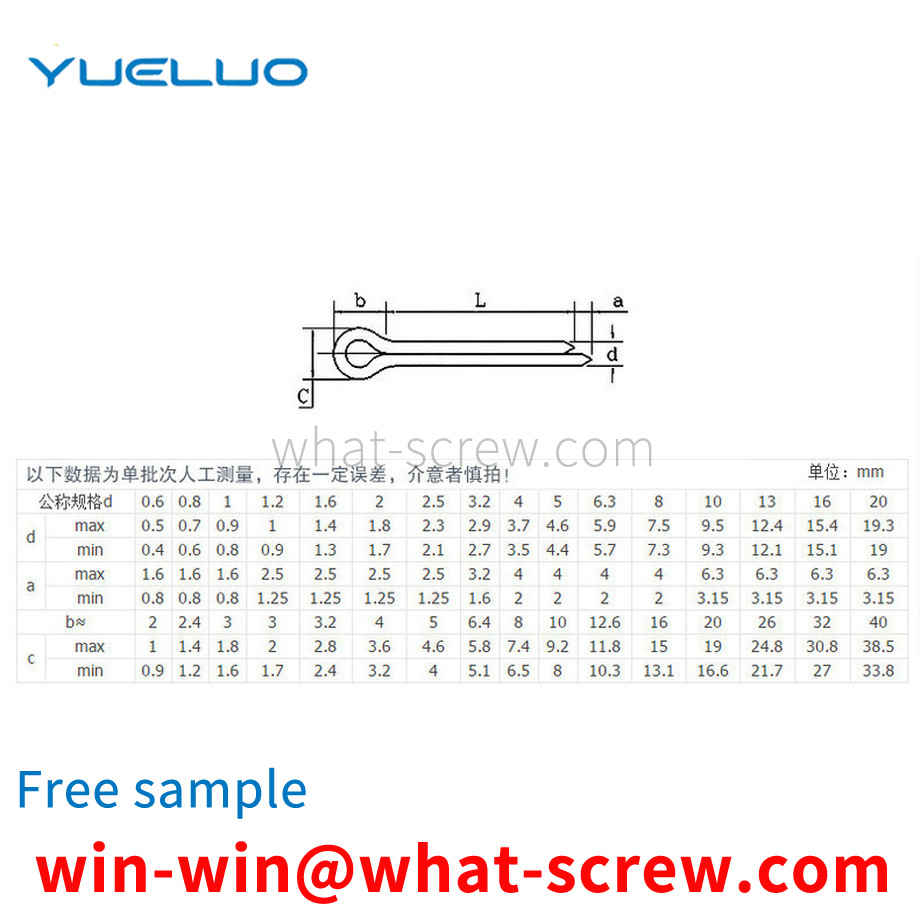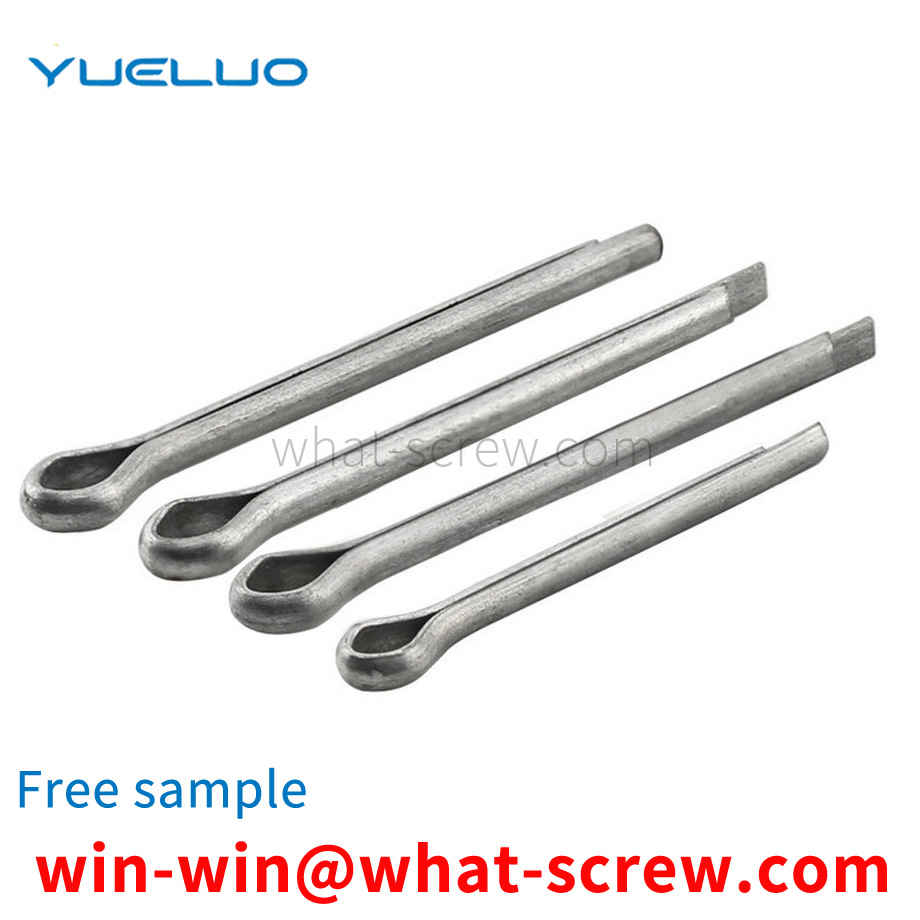An automatic circlip device discloses an automatic circlip device capable of realizing automatic assembly of the circlip to improve production efficiency and reduce labor costs. However, there are problems of low degree of automation and low work efficiency.
There is a standard for the outer hexagon bolt standard, which is a grade standard, which is divided into grade 4.8 and grade 8.8. These two levels are used a lot in the market. Especially grade 4.8 hex head bolts. Because it is much cheaper than 8.8 hex bolts. Of course it is more widely used. But for demanding products. Because of its high requirements in various aspects such as hardness. This requires the use of 8.8 hex bolts. Grade 8.8 hex bolts are harder in terms of hardness and screw torque. It is safer to use the product. Tighter and more stable.
The self-tapping locking screw is composed of three parts: the head, the stem and the end of the stem from beginning to end. The composition of each self-tapping screw has four major elements: head shape, wrenching method, thread type, and end type. Head Shapes - Head shapes come in all shapes and sizes. There are round head (semi-round head), oblate head, round head flange (with pad), oblate head flange (with pad), pan head, pan head flange (with pad), countersunk head, semi-countersunk head, Cylinder head, spherical cylinder head, horn head, hexagonal head, hexagonal flange head, hexagonal flange (with gasket), etc. Wrench Styles - There are various ways of wrenching. External wrench: hexagonal, hexagonal flange, hexagonal flange, hexagonal flower shape, etc.; internal wrench: slotted, cross groove H type (Phillips), cross groove Z type (Pozidriv), cross groove F type (Frearson) , Square groove (Scrulox), compound groove, internal spline, internal hexagon flower (plum groove), internal triangle, internal hexagon, internal 12-angle, clutch groove, six-blade groove, high torque cross groove and so on. Thread Types - There are many types of threads. There are self-tapping threads (wide thread), machine threads, drywall screw threads, fiberboard screw threads, and some other special threads. In addition, the thread can be divided into single lead (single head), double lead (double head), multi-lead (multiple head) and high and low thread double head thread. End type - The end type mainly includes saw end and flat end. However, according to the function of use, grooves, grooves, incisions or parts with a cutting function can be processed. In some standards, the same saw end or flat end, there are different forms. There are various changes in the head shape, wrenching method, thread type and shank end type of self-tapping screws. They can be combined with each other to show many different products belonging to the category of self-tapping screws.
The meaning of bolt performance grade is an international standard. Bolts of the same performance grade, regardless of the difference in material and origin, have the same performance, and only the performance grade can be selected in the design. Strength grade The so-called 8.8 and 10.9 grades refer to the shear stress grades of bolts of 0.88GPa and 1.09GPa 8.8 Nominal tensile strength 800N/MM2 Nominal yield strength 640N/MM2 General bolts use XY to indicate the strength, X *100=tensile strength of this bolt, X*100*(Y/10)=yield strength of this bolt (because according to the regulations: yield strength/tensile strength=Y/10, that is, 0.Y is the yield strength ratio ) If the grade is 4.8, the tensile strength of this bolt is: 400MPa; the yield strength is: 400*8/10=320MPa. Another: stainless steel bolts are usually marked as A4-70, A2-70, and the meaning is otherwise explained Measurement: There are two main units of length measurement in the world today, one is the metric system, and the measurement unit is meters (m) and centimeters (cm). ), millimeter (mm), etc., are used more in Europe, my country and Japan and other Southeast Asian regions, the other is the British system, and the unit of measurement is mainly inches (inch), which is used more in the United States, Britain and other European and American countries. 1. Metric measurement: (decimal system) 1m2 =100 cm2=10000 mm2, imperial measurement: (8 decimal system) 1 inch = 8 inches 1 inch = 25.4 mm 3/8¢¢×25.4 =9.523, 1/4 ¢¢ The following products are indicated by their number, such as: 4#, 5#, 6#, 7#, 8#, 10#, 12#
High-strength fasteners must be quenched and tempered according to technical requirements. The purpose of heat treatment and tempering is to improve the comprehensive mechanical properties of fasteners to meet the specified tensile strength value and yield ratio of the product. The heat treatment process has a crucial impact on high-strength fasteners, especially its intrinsic quality. Therefore, in order to produce high-quality high-strength fasteners, advanced heat treatment technology and equipment must be available. Due to the large production volume and low price of high-strength bolts, and the threaded part is a relatively fine and relatively precise structure, the heat treatment equipment is required to have large production capacity, high degree of automation, and good heat treatment quality. Since the 1990s, the continuous heat treatment production line with protective atmosphere has dominated, and the shock bottom type and mesh belt furnace are especially suitable for heat treatment and tempering of small and medium-sized fasteners. In addition to the good sealing performance of the furnace, the quenching and tempering line also has advanced computer control of atmosphere, temperature and process parameters, equipment failure alarm and display functions. High-strength fasteners are automatically controlled and operated from feeding-cleaning-heating-quenching-cleaning-tempering-coloring to offline, which effectively ensures the quality of heat treatment. The decarburization of the thread will cause the fastener to trip before the resistance required by the mechanical properties is reached, which will cause the failure of the threaded fastener and shorten the service life. Due to the decarburization of the raw material, if the annealing is improper, the decarburized layer of the raw material will be deepened. In the process of quenching and tempering heat treatment, some oxidizing gas is generally brought in from outside the furnace. The rust of the bar wire or the residue on the surface of the wire rod after cold drawing will also decompose after being heated in the furnace, and some oxidizing gases will be generated by the reaction. For example, the surface rust of steel wire, which is composed of iron carbonate and hydroxide, will be decomposed into CO₂ and H₂O after heating, thus aggravating decarburization. Studies have shown that the degree of decarburization of medium carbon alloy steel is more serious than that of carbon steel, and the fastest decarburization temperature is between 700 and 800 degrees Celsius. Because the attachments on the surface of the steel wire decompose and synthesize carbon dioxide and water very quickly under certain conditions, if the furnace gas of the continuous mesh belt furnace is not properly controlled, it will also cause excessive decarburization of the screw. When the high-strength bolt is formed by cold heading, the raw material and the annealed decarburized layer not only still exist, but also are extruded to the top of the thread. For the surface of the fastener that needs to be quenched, the required hardness cannot be obtained. Its mechanical properties (especially strength and wear resistance) decreased. In addition, the surface of the steel wire is decarburized, and the surface layer and the internal structure have different expansion coefficients, and surface cracks may occur during quenching. For this reason, during quenching and heating, the top of the thread should be protected from decarburization, and the fasteners whose raw materials have been decarburized should be properly carbonized, and the advantages of the protective atmosphere in the mesh belt furnace should be adjusted to the original carbon-coated parts. The carbon content is basically the same, so that the decarburized fasteners are slowly restored to the original carbon content. The carbon potential is preferably set at 0.42% - 0.48%. The carbon coating temperature is the same as the quenching heating, and cannot be carried out at high temperatures , so as to avoid coarse grains and affect mechanical properties. The quality problems that may occur in the process of quenching and tempering of fasteners mainly include: insufficient hardness in the quenched state; uneven hardness in the quenched state; excessive quenching deformation; quenching cracking. Such problems in the field are often related to raw materials, quenching heating and quenching cooling. Correctly formulating the heat treatment process and standardizing the production operation process can often avoid such quality accidents.
We have many years of experience in the production and sales of screws, nuts, flat washers, etc. The main products are: anti-thread bolts, accessories table and chair bolts, half-thread hexagon bolts, machine screws and other products, we can provide you with suitable fasteners for you solution.



















 Service Hotline
Service Hotline




